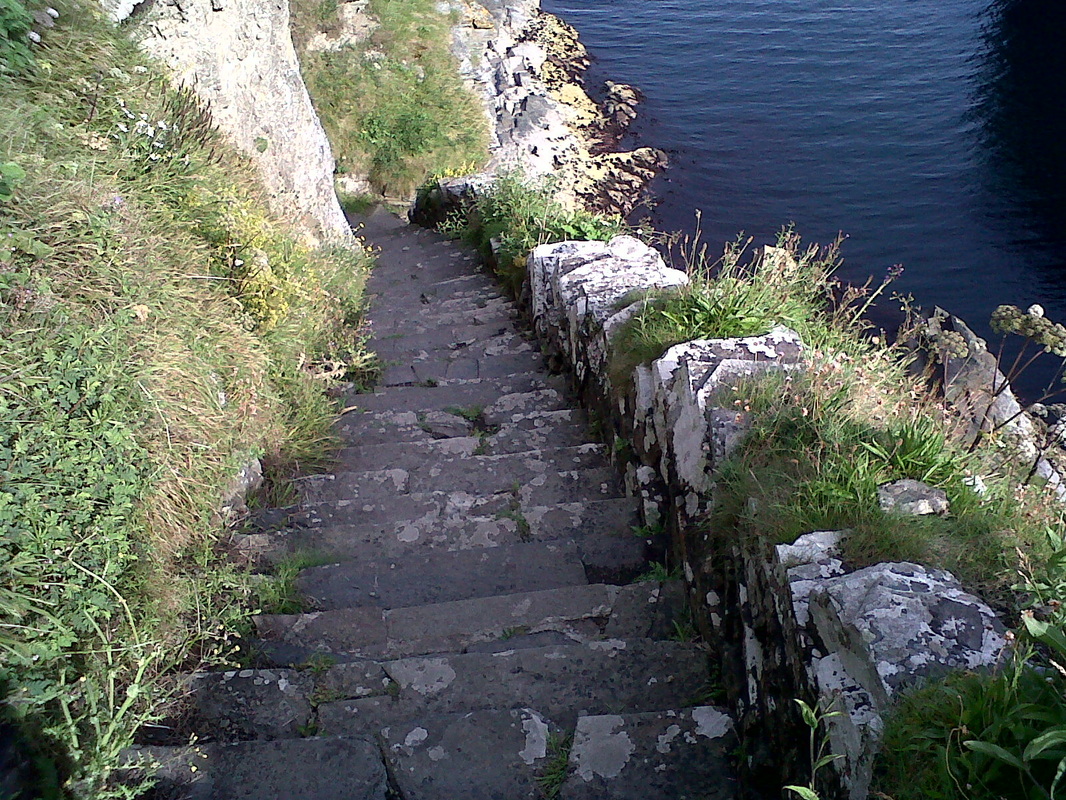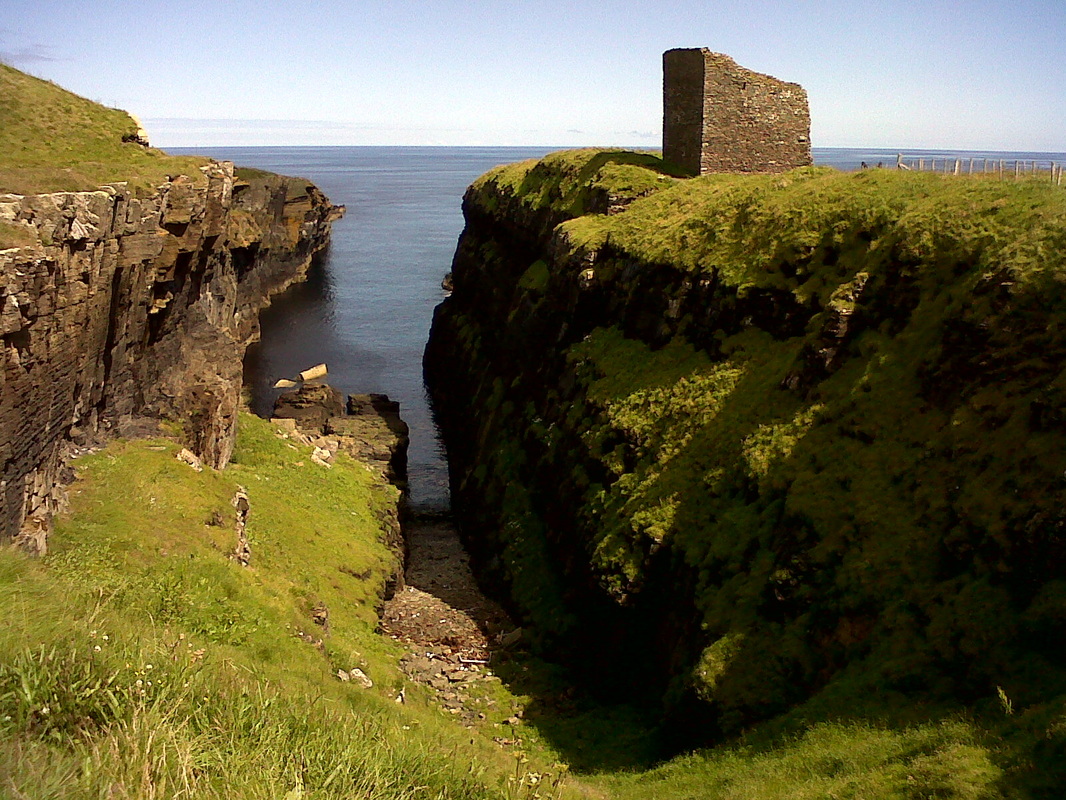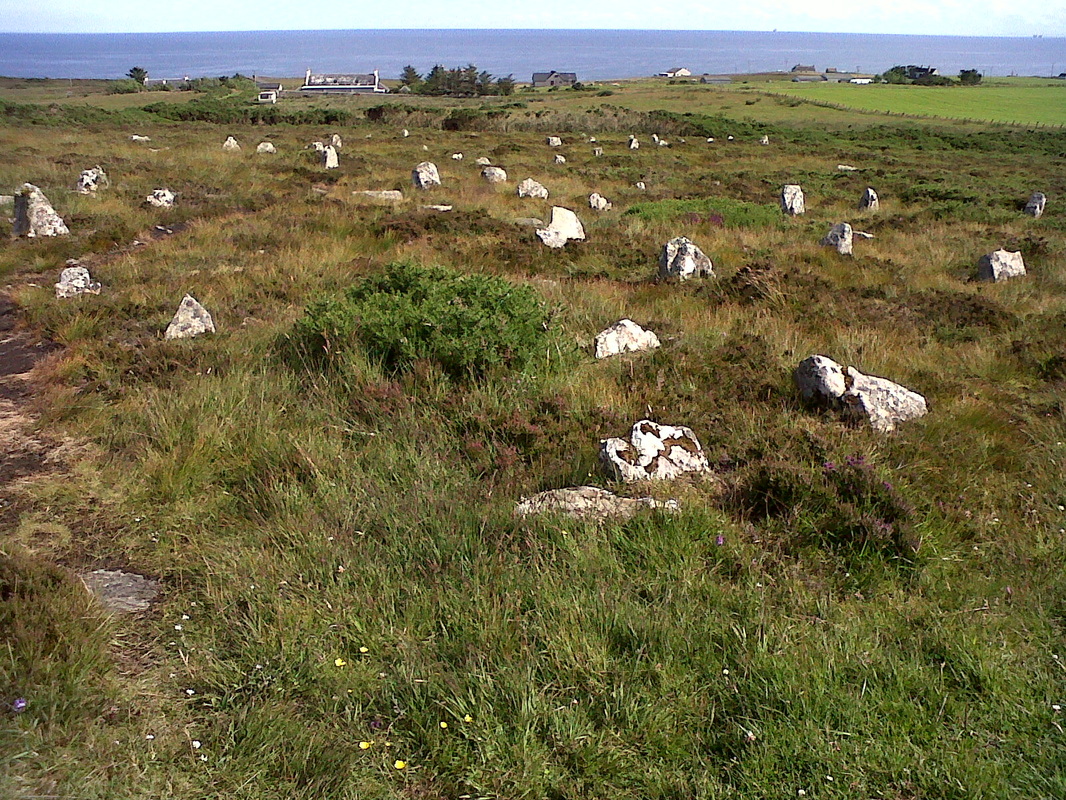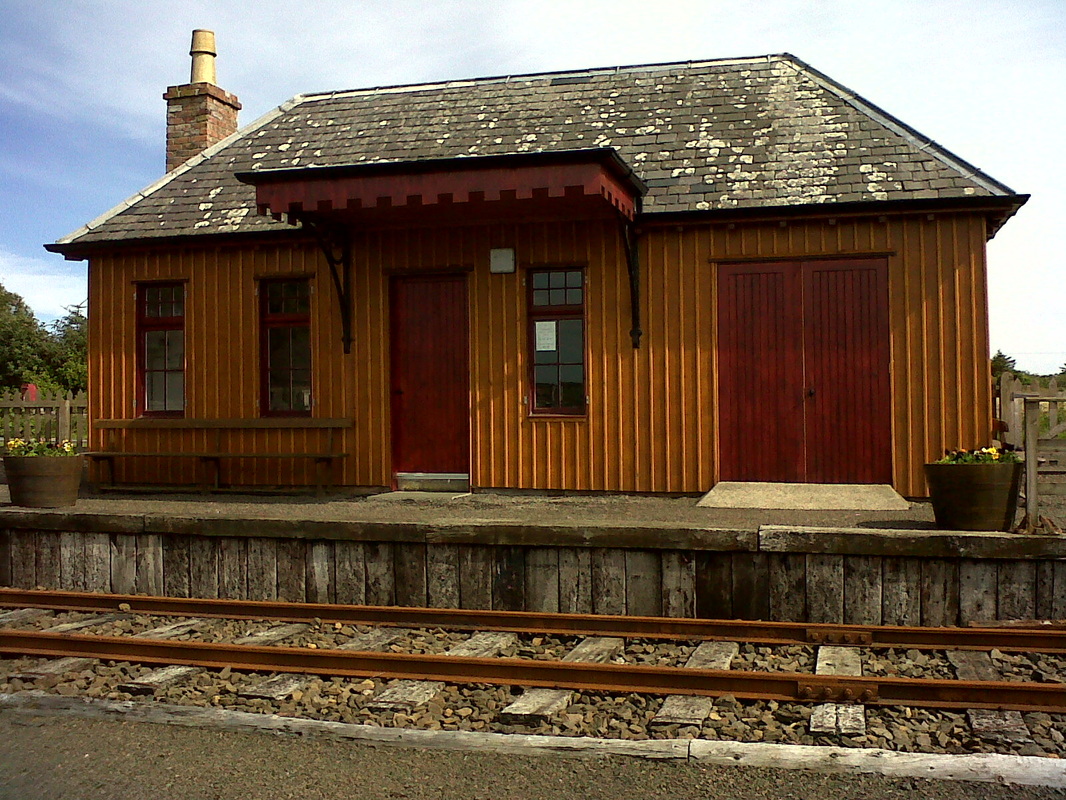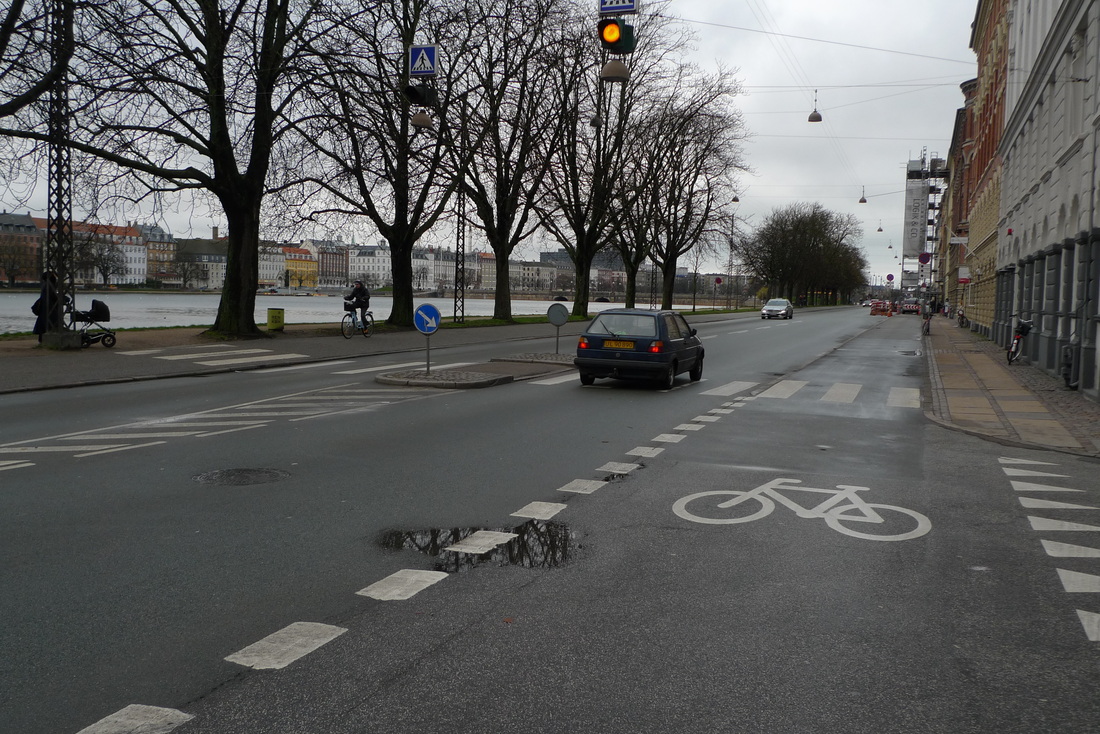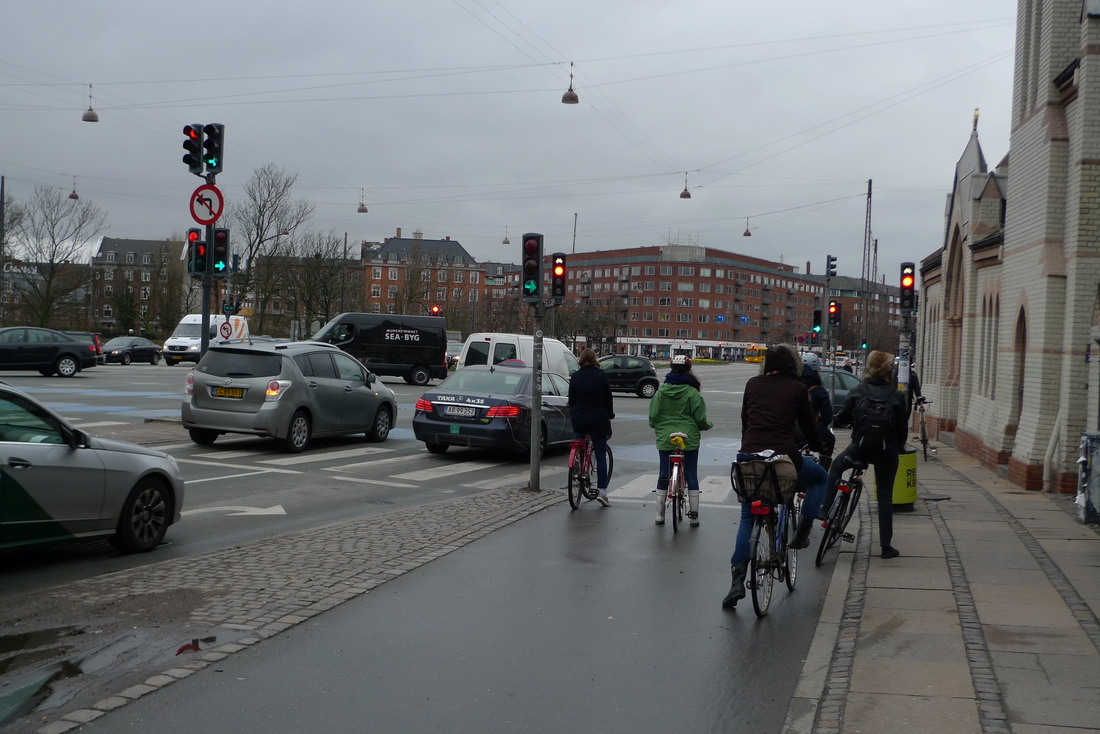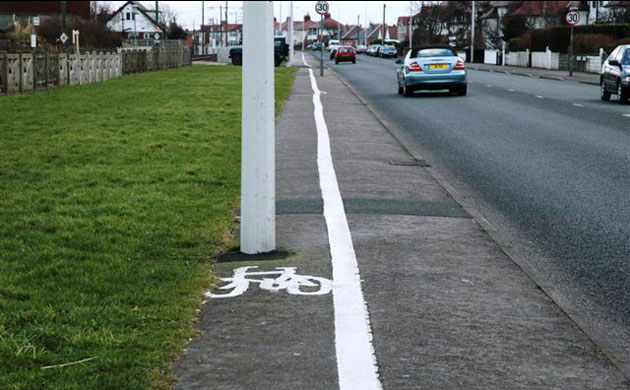|
I was surprised by just how much there is to see and do in Wick. I had assumed that this town in Scotland's far north, the very last stop on the rail network, would be lacking in attractions. How wrong I was! There are two castles, a whisky distillery, standing stones and much more to keep you busy for many days. Here are my ten favourite things to do:
1. Whaligoe Steps
The cliffs are dramatic, the sheer drop to the water below is scary and seabirds squawk and swoop. Wildflowers and sea grass sprout from the rock and cracks in the stairs. The Whaligoe Steps descend steeply to a disused harbour that dates from the 1790s. Do not miss the cafe at the top of the steps- it has a huge picture window looking out to sea and you can sip on gourmet coffees and enjoy the home baking. Located 8 miles south of Wick on the A-99. Use this guide as the steps are notoriously difficult to find.
2. Wick Heritage Centre
Allow at least two hours to absorb the contents of this treasure trove of a museum. It is crammed full of curious objects from Wick's past, including reminders of the town's vast fishing enterprise. For a time Wick had been the busiest fishing port in Britain. The biggest catch in a single day occurred in 1864 when 24 million herring were landed. Make some time to enjoy the museum's gardens with their colourful flower displays and views over the town.
3. Castle of Old Wick
A dramatic coastal walk brings you to one of the oldest castles in Scotland. It dates from 1100 and only the ruined tower remains. It is located one mile south from the centre of town. On the way you pass the Trinkie, Wick's outdoor pool- try it out, if you are brave enough!
4. Wander the streets of Pulteneytown
Pulteneytown is an area of Wick that was built by Thomas Telford, Scotland's most famous civil engineer, to house the workers and services that supported the fishing boom. It is laid out in a grid pattern with attractive stone buildings that make it a pleasant area for a stroll. Don't miss Argyll Square which has a small tree-lined park in the middle of it.
5. Old Pulteney distillery
It is in Pulteneytown that you will find Old Pulteney Distillery. This is the most northerly distillery on the Scottish mainland and this location gives the whisky its unique character. If you visit the small visitor centre and shop you are bound to be offered a free dram to see for yourself if you can taste the hint of sea salt. For a more in-depth experience there are guided tours.
6. Castle Sinclair Girnigoe
I was surprised to discover that Wick had one, never mind two castles. Castle Sinclair Girnigoe is located a bit further away from the town, just over 4 miles north. It is a nice quiet road to get there, so walking is a possibility if you do not have your own transport. The location is impressive with the ruin teetering on a cliff edge. You can cross into the courtyard across a wooden footbridge and look through the gaping windows to the sea far below.
7. Staxigoe Harbour
This is a beautiful little spot on a warm sunny day. The perfect place to come with a picnic lunch. It is a surprise to discover that this peaceful place had once been the largest herring station in Europe. It is now difficult to imagine the army of sail-makers, gutters and coopers who crowded Staxigoe Harbour. The harbour is about 2 miles from Wick High Street.
8. Hill o' Many Stanes
The name of this place does exactly what it says on the tin- a hill with over 200 stones. The deliberate layout of the stones in neat rows makes it easy to picture ancient peoples putting them here for religious ceremonies, to follow lunar cycles, or a place for families to remember ancestors. The truth is that nobody knows for certain why the stones are here which makes it all the more intriguing. The stones are located about 9 miles south of Wick along the A99.
9. Thrumster station
An unexpected site next to the A99 road is this cute wooden station with a piece of train track that goes nowhere. Trains have not run here since 1944 when this was part of the 13 mile Wick and Lybster Light Railway. There is not much to see, although you can peer through the windows and admire the refurbished interior with wood panelling and fire place. Thrumster is located about 4 miles south of Wick
10. The World's shortest street
The road sign into Wick for Mackays Hotel has a curious note in brackets 'on the Shortest Street in the world'. Who would have thought that the shortest street is located in Wick? It is official, according to Guiness Book of Records, that Ebenezer Place in Wick is the shortest street in the world at 2.06m. The door to the restaurant of Mackays Hotel is the only thing on Ebenezer Place. The food is good so why not treat yourself to a meal on the world's shortest street? More about Wick: On my second visit to Wick I discovered ten more things to see and do, which you can read on my blog Read my review of Mackays Hotel, which is on the shortest street in the world
7 Comments
Edinburgh has two mainline train stations. The more famous Edinburgh Waverley where the majority of visitors to the city get on and off trains. Then there is the lesser-known Haymarket which is more convenient for the west of the city. It recently had a £25 million redevelopment which I think is worth celebrating.
The journey time between Haymarket and Waverley is only four minutes, so I used to wonder what the benefit was in having two stations in the city. That was before I lived in Edinburgh and now that this is my home I find that Haymarket was my best option for catching a train. For several years my flat was a ten minute walk, or 5 minute cycle, from Haymarket so it was very convenient for starting out on my trips. It meant avoiding the busy roads that I would have to take if Waverley was the only train station. The main disadvantage of Haymarket, for a cyclist, used to be the lack of lifts to the platforms. Carrying my bike, fully loaded with panniers for a weekend trip, down those stairs was a real test of strength. Some lifts were eventually installed, but they did not serve all of the platforms. Inevitably, when returning home and feeling tired after lots of cycling and a long train journey I always seemed to arrive at one of the platforms with no lift. I would summons up my reserves of energy and haul my bike up the steps. I always thought that it must be worse for visitors to the city who do not know this and arrive with their bicycle, or luggage, at Haymarket pacing up and down the platform looking for a lift that does not exist. That all changed with the redevelopment of Haymarket. There are now lifts to all platforms and the station has a spacious modern look. The main concourse almost feels too big as it never fills up with people, but this is because the station has been built with future growth in mind. Passenger numbers are expected to climb from the current four million a year to 10 million by 2030. It feels a little soulless and lacking in the atmosphere and excitement that you get at Waverley station. There is a coffee kiosk in one corner and a Marks and Spencer food outlet, but I feel that they could have made more out of the original 1842 station building. It has wonderful tall windows on the upper floors and this could have been a great location for a cafe with views of both the concourse and the street, perhaps a grand cafe that stations of the steam age would have had. But, I am a romantic when it comes to such things. The main thing is that Haymarket is a station for the 21st century that services the demands of the modern railway passenger, including those with bicycles. Copenhagen is well-know for being one of the best cities in the world for cycling. I went there to see it for myself and I was amazed by the cycling infrastructure. Cities in Scotland or anywhere in the UK have a long, long way to go before they can be compared to Copenhagen. Cycling is normalised in Copenhagen with 30% of journeys to work made by bike, where it is less than 3% in Scotland. There is an inclusive bike culture in Copenhagen with everyone taking to two wheels. There is a sense of fun to cycling with bright coloured bikes on sale. In one bike shop I even found the plastic flowers for the wicker shopping baskets that people attach to the front handlebars. In Scotland cycling in cities is regarded as something tinged with danger. Helmets, lycra and high visibility clothing is the order of the day for the Scottish urban cyclist. In Copenhagen most cyclists do not wear helmets and they are dressed in normal clothing like jeans and suits. Therefore, this makes cycling appear as a normal, everyday, inclusive activity that is a realistic form of transportation for many people. The key to this distinct difference between Copenhagen and Scotland is that the Danish city has infrastructure that properly separates cyclists from motor traffic and pedestrians. This makes cycling safe, easy and therefore an attractive option to get to work. When I was walking along the pavement I was initially fearful that if I tried to cross the road I would end up colliding with cyclists. However, this never happened. The system works really well as long as everybody sticks to where they are supposed to be. Pedestrians on the pavements. Cyclists in the cycle lane. Cars on the road. Everybody follows the rules and the system works. No cities in Scotland have infrastructure like this. Cycle lanes are sometimes inadequate. On most roads cyclists share with motor traffic which can lead to road rage and risk of accident. It is why I rarely cycle in Scotland's cities. My website is about the joy of discovering Scotland's minor roads and getting out into the countryside where traffic volumes are low. Where there are cycle lanes in British cities they are sometimes a joke and this has spawned websites devoted to highlighting "crap cycle lanes" The problem of inadequate cycling lanes is not only a problem in Britain. A Guardian article had readers submitting photos of laughable cycling lanes from around the world. There are examples from Spain, France, Poland and other countries. Copenhagen does seem a world leader in cycling infrastructure. Perhaps it is not fare to compare Copenhagen with somewhere like Edinburgh. I live in Edinburgh and there appears to be few opportunities to do anything more for cycling because of the natural layout of the city. Take the Old Town with its steep hills and very narrow roads- there is simply no space to have cycling lanes on the scale of those in Copenhagen. Copenhagen looks to be a naturally spread out city with wide streets that are easier to incorporate cycle lanes into. I was impressed by Copenhagen and if I lived there I would definitely use a bicycle. Could Scottish cities be this good? Not without huge investment and radical changes to road layouts which there is currently little evidence of. However, the Scottish Government has committed to 10% of all journeys being made by bicycle by 2020 so there is ambition and I am hopeful that improvements will come.
|
|

